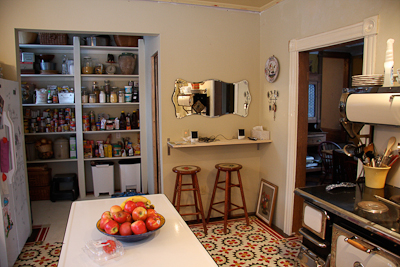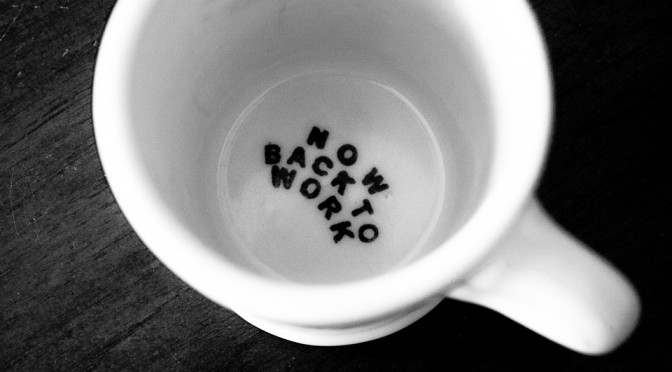
Apparently, to my chagrin, there is a limit to the number of balls I can keep in the air without running around like a chicken with my head cut off or forgoing sleep altogether. New blog entries and housecleaning fell hard and fast off the virtual priority list. But it has been an intense and fascinating last six weeks.
Got the call from CBC that my radio pitch for a national summer replacement series was “under consideration” and the development group wanted a script treatment to get a better understanding of the look and feel of the series. That sent me into high gear, looking for an experienced producer with development experience that could walk me through the process. While I am always super-excited to be jumping feet first into the unexplored territory of new experiences, I’ve also consulted long enough to know I better know exactly what I’m aiming for. So it was think, discuss, write, and now re-write, as I stretch to both understand and give them what they’re looking for.
God knows there is no shortage of material around my subject – the relationship of Canadians to their homes and communities – the challenge is to pull out the most common denominators and keep it simple to fit their format. It is becoming evident that one medium cannot cover the full scope of both the material and, most importantly, my big-picture vision for where I want to go with it. As my friend Heather, a television writer in L.A., said “I want to SEE you build a sauna, root cellar, and bake oven.” So parsing out the ideas into different forms for different mediums is on the agenda. Absolutely fascinating, this. If you have production contacts that you think would be a good fit, please let me know.
Simultaneously, my friends from trade school, Nick and Jordan, were out working with me to move a few large projects ahead on the house. Ideally I’d like to be doing the bulk of the work myself, as my house is my ‘apprenticeship’, but I was bumping up against both time and physical limitations. Pretty tricky for me to sister 2x10x14′ ceiling joists or hang drywall by myself. It’s sweet not to be looking at exposed wall insulation, to have a kitchen ceiling once again, to be down to the short strokes on the passive solar vestibule, and to have the most welcoming front stairs in the neighbourhood. After some mind-numbing house frustrations in June/July, it felt great to be working again and making progress.
I ate a number of slices of humble pie this summer that left me feeling pretty beat up. For example, it took several attempts, much labour, and several weeks just to get two patio doors and the new backdoor installed. I’m still not happy about the quality of the product, one of the installs requires a further look in the spring, and I ended up having to remove a wall section containing masonry infill to install the other. There were a number of learnings I pulled from those experiences, which may be useful to you, dear reader, whether you’re thinking of doing your own house projects or hiring out the work.
Schooling, of any sort, of any length, is not a replacement for real life experience. Post-secondary education, if you’ve paid reasonable attention, provides building blocks of knowledge that will enable you to get up to speed more quickly in the real world. But it does not mean you know everything. In fact, you probably know even less than you think you know. Do yourself a favour, curb your ego early on and be prepared to make lots of mistakes, sometimes costly ones.
Find a mentor (or six). A formal apprenticeship, assuming you’re working with people who really know their trades well, is an efficient way to learn ‘best practices’. In lieu of a formal apprenticeship, find people whose work and skills you admire, who are willing to talk through some of your work challenges. No one person is likely to meet all your needs so look for a variety of folks to act as mentors. Buy them coffee. Go on ride alongs with them and offer to swap them some time for their advice. You’ll also begin to build a good network of contacts.
If you’re serious about the carpentry biz, buy a set of old Audel’s. And read them. What’s old is new again and good building practices never go out of style. I picked up this tip from the inimitable Tedd Benson of Bensonwood Homes
Old or new house, be realistic about how much actual time you have to spend on the project. Planning, decision-making with or without a spouse, managing human resources, supply sourcing/purchasing, site set-up and take-down, moving materials and machines around and intermittent clean-up takes an unbelievable amount of time. It also requires that you drop anything else you are doing, or planning on doing, and doing what is required at that moment. For the past few weeks I estimate that I spent about 75% of my ‘working’ day on these kinds of tasks and about 25% on the real work of building. Plus weather – stifling humidity, wind and rain, and cold – plays a significant role in scheduling. Thinking about building your own house or acting as the sub-contractor when you work full-time? Forget it, unless you’re self-employed and are willing to take a leave of absence. You need to be there, in body and mind, otherwise things can go very wrong, very quickly.
Houses are systems. Do you repair your own car? Would you build your own car from scratch? So why do you think you can automatically do those things on your house?
People who are talented and dedicated to their trades and craft create works of art everyday. Expect to pay well for work that is well-done. You really, really don’t want the lowest bidder touching your systems. Ask Mike Holmes if you think I’m full of hyperbole.
Repairing or restoring old houses is not for the feint of heart. Old houses can be very well built but they do tend to settle over time. Many surfaces will no longer be plumb, level or square. Finding square, itself, can be a challenge. Most work on an old house will require much head-scratching and clever problem-solving. You want a) people who have good, quality experience working on Old Gals or b) carpenters who are willing and able to persistently problem-solve. If you have b), you need to be willing to supervise and provide very specific directions. Working on old houses is significantly more difficult and complicated than working on new ones and you need to take responsibility for the outcomes. You need to strap on the tool belt or thinking cap and be right in there. You also need to accept that the right solution may not always be the ‘perfect’ solution.
As an old house owner you need to be willing to embrace your inner wonky and introduce the word ‘charming’ into your vocabulary. Also the words ‘poor’ and ‘vacationless’.
Although reclamation of used materials is good for the environment, it is not without its costs. Although I saved most of the trim boards from my house, the bulk of the clapboard went straight to the dumpster. It didn’t come off easily, splintering into a million pieces. Could we have been more careful and saved at least a part of it? Yes, but stripping a house carefully takes time and time=labour which equals significant costs. Then when the material is off, the nails need to be taken out, it needs to be stripped, primed and refinished, and it needs to be stacked and stored somewhere. It also helps to have some kind of covered outdoor space to work that can be dedicated to this purpose, which I don’t have. Plus knocking nails out of old growth wood is no walk in the park, which I’ve learned from personal experience. Yes, dumpsters cost money and it takes a goodly amount of time to locate specific reclaimed materials. The reality is, old or new, nothing is free.
Get a second opinion/estimate. There is rarely ever only one way to do anything, although there are many, many people who delight in telling you otherwise. Get at least a second estimate for work, read as much as you can on a subject, and talk to others who may have a different opinion from the so-called experts. Ask as many questions as you need to get a satisfactory answer. Bounce ideas off an informed friend you can trust. And carefully consider the next point.
Take your time. We’ve been picking away at our house for thirteen years, which would probably drive many folks to drink. But the greatest benefit of taking our time, which has been due to our financial capacity, limited time and expanding skills and knowledge, has been that we’ve really had a chance to understand our changing needs and allow our style to unfold. Everyday I walk into the kitchen and fall in love all over again. I love the magnificent painted oak floor that looks like French tile. I love the hand-carved and utterly custom-built adjoining pantry. I love the second-hand sweetheart stove and vintage hoosier/baking cupboard. I love the bay window that frames a private view of the formal fragrance garden, which I designed specifically with that goal in mind. And I am champing at the bit to build the final piece of hand-carved cabinetry, featuring a thick concrete countertop and ‘curtains’ that will hide the modern amenities. It’s not a large kitchen but it’s both highly utilitarian and very aesthetically pleasing. I thoroughly enjoy it, even in its unfinished state.
Don’t work mad. I was scheduled to complete the exterior of the house this summer, which included installing the new trim and clapboard. Two weeks before school ended for my four kids, my husband accepted a job 2,200 kms away, commuting home on weekends. That pretty much kaiboshed my ability to be up on three lifts of scaffold for any uninterrupted duration. Finish carpentry work is thinking work that requires patience and careful attention. It does not adapt well to multitasking.
Boy, was I mad.
I worked short-tempered and with steam pouring out my ears for the next six weeks, struggling with my youngest son who wasn’t coping well with the new family schedule. I couldn’t enjoy the beautiful (though hot) weather and was in a state of anxiety that made it difficult to make good decisions. One day I realized, mad or otherwise, I was not going to complete even a fraction of the work on my agenda. I decided to stop working on the house, stop wasting my time being mad, and find other ways to enjoy the precious and short-lived summer. I put all my tools away, packed up the kids and camping gear, and headed off for a month-long vacation.
Working mad ruins the joy of the endeavour. Sometimes it’s worth putting off a project for awhile instead of turning it into something hateful.
Learn to accept chaos during renovations. If you have neatnik tendencies, I suggest you employ a contractor and move out of your house until the work is completely complete. If you do the work yourself then you’ll probably be clearing tools from the dining room table for some time to come. In which case, make friends with people who own old houses, where chaos is the norm.
Accept there will be mistakes. It may be you, it may be others, but they will be made and they will cost you time and money. The quicker you can solve them, move on, and forget them, the happier you will be.
Pretty good advice for life in general, I think.
